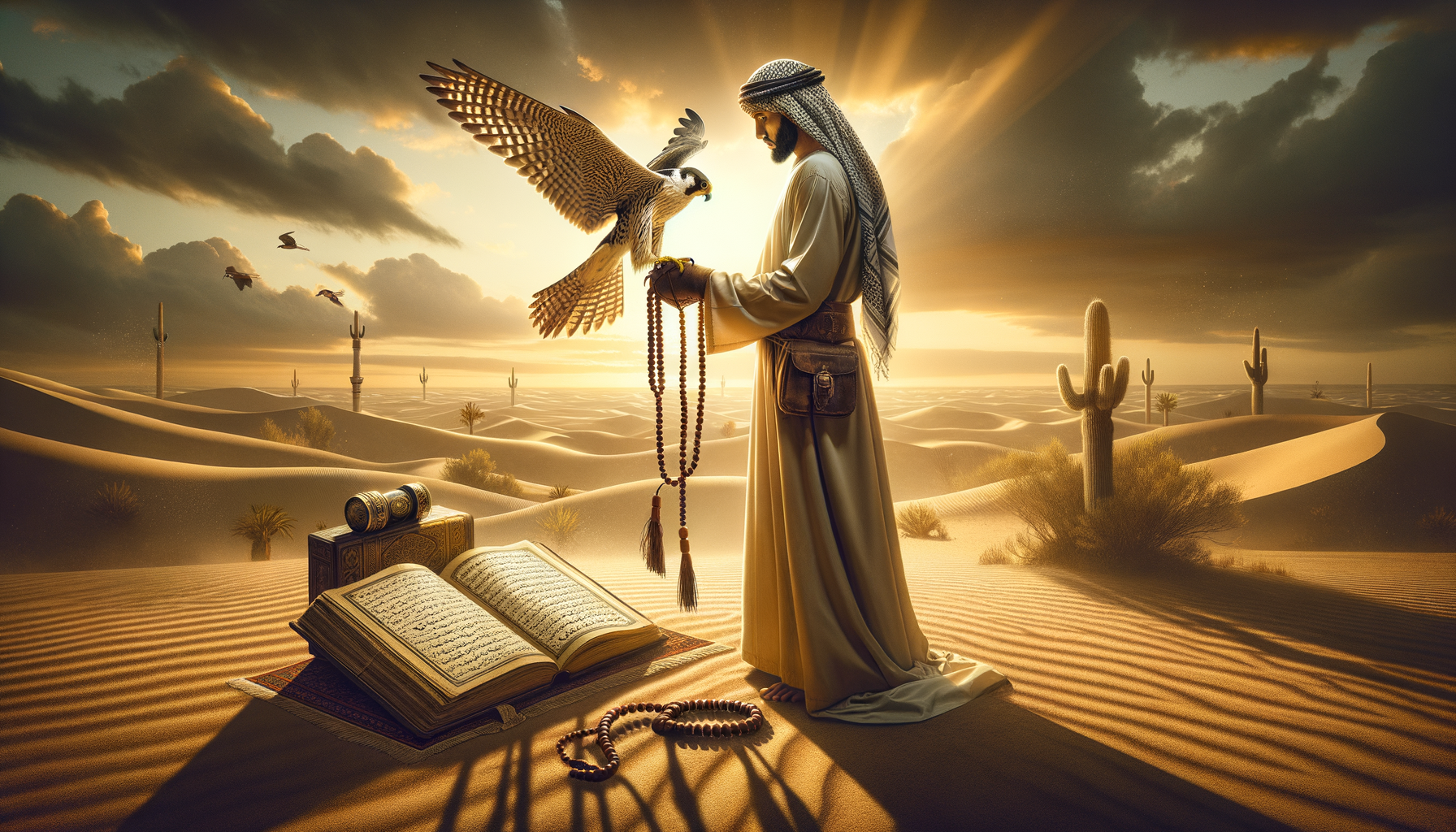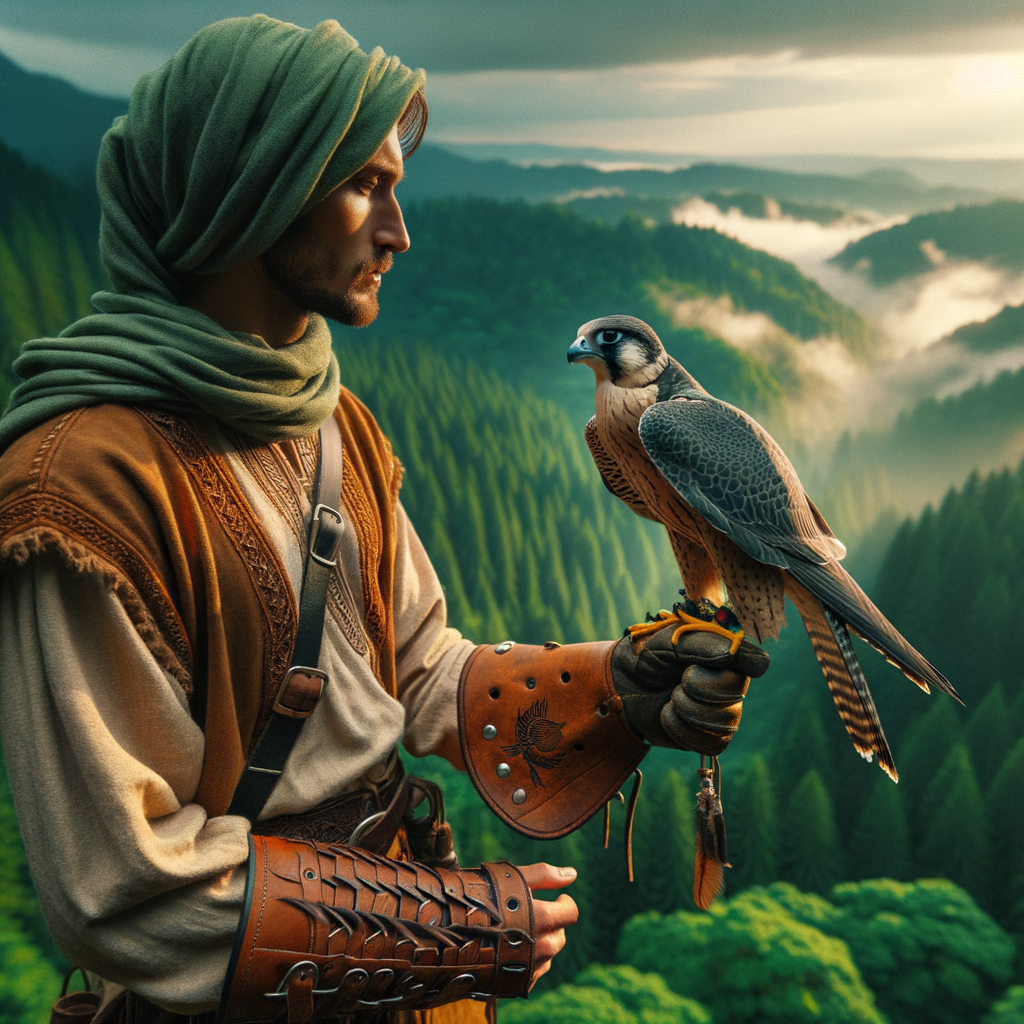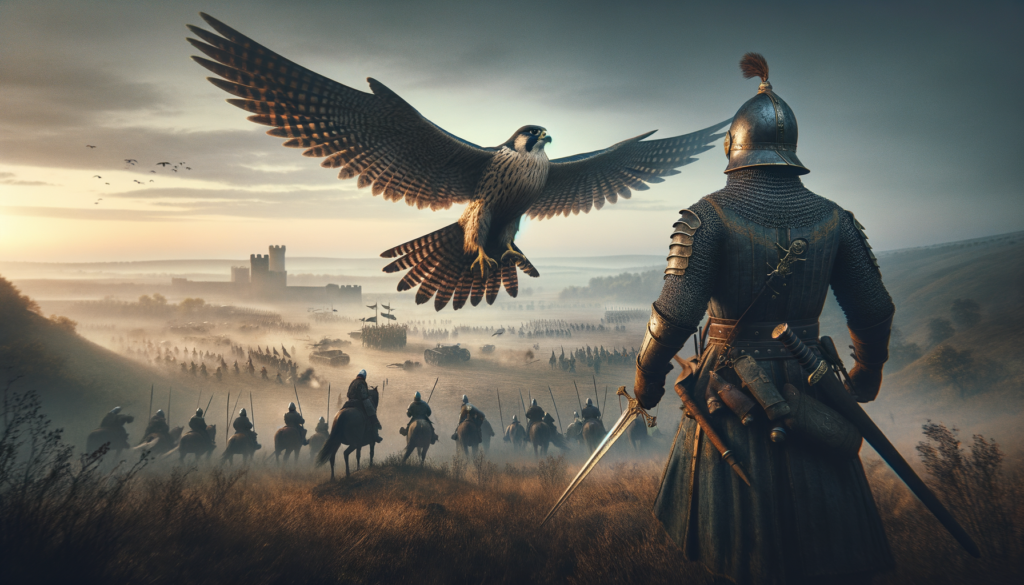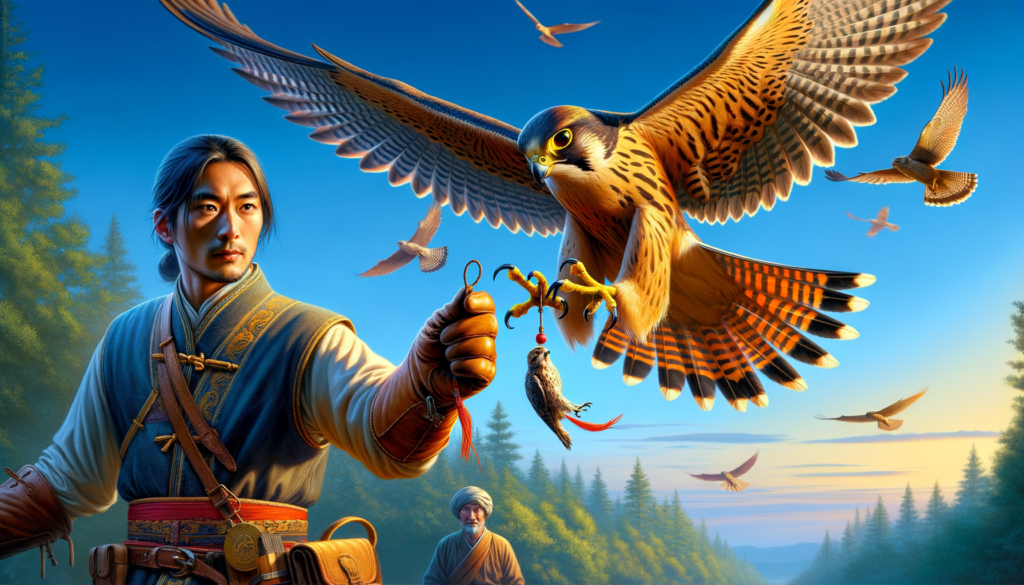Falconry and Religion: Key Highlights
- Falconry has deep roots in ancient religions and cultures around the world.
- Birds of prey, like falcons, were considered sacred and powerful symbols.
- Ancient Egyptian gods, such as Horus, were depicted with falcon heads, showing the importance of these birds.
- In many cultures, falcons symbolized freedom, victory, and nobility.
- The art of falconry was often linked to royalty and the divine right of kings.
- Many religious texts and stories include references to falcons and other birds of prey.
- Some cultures believed falcons had spiritual connections and could communicate with the gods.
- Falcons were sometimes used in religious ceremonies to signify divine presence or favor.
- The skills and techniques of falconry were passed down through generations, becoming a sacred tradition.
- Today, falconry continues to be an important cultural and spiritual practice in many parts of the world.
The Fascinating Intersection of Falconry and Religion
Welcome to an exciting journey where the ancient practice of falconry meets the profound depths of spirituality across different cultures and religions. Think of it like stumbling upon hidden Celtic ruins, filled with secrets and stories just waiting to be uncovered. In this article, we’ll reveal how this majestic practice has not just captured prey, but also the imaginations and devotions of people throughout history. Keep reading as we soar through time and belief systems, unraveling an incredible tale where bird and human spirit align. Whether you’re a history buff, a nature enthusiast, or someone curious about age-old traditions, this story promises to be as captivating as the flight of a falcon.
Stay with us and let’s embark on this mesmerizing path together. You wouldn’t want to miss the thrill, the wonder, and the profound connections that falconry has forged within the realms of faith and spirituality. Ready to take flight? Let’s go!
The Fusion of Falconry and Religion: A Historical Perspective
Falconry, known as the art of training falcons to hunt, has a rich history that intertwines with various religious practices and beliefs around the world. The bond between falconry and religion showcases the importance of these majestic birds not just as hunting companions but as spiritual symbols. Let’s delve into the fascinating world of falconry in religion, religious falconry practices, and historical falconry.
Falconry in Ancient Religions
Throughout history, many cultures have revered falcons and birds of prey as divine or sacred creatures. In ancient Egypt, falcons were associated with the god Horus, depicted as a falcon-headed deity. Horus symbolized the sky, war, and hunting. You can read more about this here. These birds were not only used for hunting but also played a crucial role in religious ceremonies and symbolism.
Religious Falconry Practices in Different Cultures
In various cultures, falconry practices have been influenced by religious beliefs. For instance, in the Middle East, falconry has deep roots in Islamic tradition. Falcons are considered noble and are often featured in art and literature. The practice is seen as a way to preserve tradition and connect with nature, reflecting the religious values of the region. Discover more about falconry in the Middle East here.
Similarly, in Japanese culture, falconry, known as “Takagari,” was not just a sport but also an integral part of Shinto and Buddhist practices. Falcons were seen as messengers of the gods and were believed to bring good fortune. This practice highlights the spiritual significance of falconry in Japanese religion and culture. Learn more about it here.
Historical Falconry and Its Religious Connections
The history of falconry is deeply interwoven with spiritual and religious elements. During medieval times in Europe, falconry was a popular pastime among the nobility, and it often had religious connotations. Many religious texts and paintings from that era depict saints and martyrs with falcons, symbolizing purity, vigilance, and nobility. For more insights, check out the history of falconry in medieval Europe here.
Falconry also played a role in indigenous cultures, where birds of prey were respected as spiritual guides or protectors. In Native American traditions, birds like hawks and eagles were considered powerful spirit animals. These connections underscore how falconry transcends mere hunting and enters the realm of spiritual and religious practice. To explore indigenous falconry further, visit this page.
The Symbolism of Falcons in Religion
Falcons and other birds of prey have been rich symbols in various religious texts and practices. They often symbolize strength, freedom, and a connection to the divine. In Christianity, falconry metaphors are used to denote vigilance and the soul’s ability to rise above earthly matters. This symbolic representation can be seen in numerous religious artworks and scriptures.
By understanding the historical intertwining of falconry in religion, we can appreciate how this ancient art form has been influenced by and, in turn, has influenced religious practices worldwide. If you are curious about the different species of falcons used in these practices, check out this resource.
Falconry’s religious roots provide a deeper appreciation for its cultural and spiritual significance. Whether you are an enthusiast looking to start your journey or a seasoned falconer exploring the rich traditions of this ancient practice, there’s always something new to learn. For those just beginning, check out our guide on getting started with falconry.
Falconry and Religion: An Introduction
Falconry is an ancient practice where humans train birds of prey, such as falcons and hawks, to hunt in cooperation. This partnership between humans and birds goes back thousands of years and has deep roots in various cultures and religions. Below are some insights on the spiritual and cultural significance of falconry.
Spiritual Significance
In many ancient cultures, birds of prey were seen as spiritual entities or messengers. For example:
- Eagles and Hawks: In many Native American cultures, eagles and hawks are considered sacred. They are seen as messengers between humans and the gods. Native Americans often incorporated feathers of these birds into their headdresses and ritual objects.
- Owls: In ancient Greek mythology, owls were linked to Athena, the goddess of wisdom. They were considered symbols of knowledge and were believed to have protective qualities.
Falconry as Intangible Cultural Heritage
Falconry was recognized by UNESCO as an intangible cultural heritage in 2010, highlighting its long-standing cultural importance. This recognition showcases the historical value and the intricate techniques passed from generation to generation.
- Historical Timeline:
- 2000 BCE: Earliest records of falconry, possibly starting in Mongolia or Mesopotamia.
- 1000 CE: Falconry spreads to Europe through Crusades.
- 2010 CE: UNESCO recognizes falconry as part of the world’s intangible cultural heritage.
Community and Social Engagement
Falconry often brings communities together, with intergenerational learning playing a key role. Events and gatherings related to falconry provide social interactions and strengthen community bonds.
- Intergenerational Learning: Elders teach youngsters the skills and responsibilities of falconry, fostering a sense of continuity and respect for tradition.
Therapeutic and Healing Aspects
Falconry is more than just hunting; it has therapeutic and healing properties. It can provide a sense of connection with nature and a meditative experience.
- Bird Medicine: Some communities believe that working with birds of prey can offer emotional and spiritual healing. This concept of “bird medicine” is integral to their cultural practices.
Conservation Efforts
Many falconers are dedicated to the conservation of raptors and their habitats. Their efforts go beyond hunting and into wildlife preservation, helping to maintain balanced ecosystems.
- Conservation Activities:
- Breeding Programs: Falconers often participate in breeding programs to increase raptor populations.
- Habitat Protection: Efforts include protecting nesting sites and feeding areas to ensure raptors thrive in the wild.
Cultural Practices and Falconry
Different cultures have different practices related to falconry, each with its unique methods and beliefs.
- Japanese Takagari: Japan has a rich history of falconry called “Takagari,” where falcons are trained for hunting rabbits and other small animals. It is a revered practice with elaborate ceremonies.
- Arabic Falconry: In many Arab countries, falconry is considered a noble sport. It is deeply embedded in their heritage, with falcons being highly prized and symbols of courage and nobility.
Modern Examples of Falconry and Culture
Here are some generalized data points about historical falconry in 2024:
| Event/Field | Description |
|---|---|
| Falconry in Virginia | Monitoring and collecting data on peregrine falcon chicks. |
| Falconry in Sports | The Atlanta Falcons’ 2024 roster. |
| Falconry in Business | Falcon’s Beyond Global, Inc.’s increase in net income. |
| Falconry in Technology | CrowdStrike’s Falcon Data Protection Detections. |
These examples show that falconry’s influence extends beyond traditional hunting and has found a place in modern conservation, sports, and even technology.
In summary, falconry is a practice rich in cultural significance, spiritual meaning, and community bonding. It is a cherished heritage that continues to be relevant and engaging today.
Falconry’s Rich Legacy and Spiritual Connection
Falconry has left a striking mark throughout history, intertwining itself with spiritual, cultural, and community elements across various societies. Although specifics on religious practices tied to falconry in 2024 are scarce, we can still appreciate its profound spiritual significance from the past. Birds of prey like eagles, owls, and hawks were revered as spiritual messengers, creating a deep connection between humans and the mystical world.
Moreover, falconry has been recognized as an intangible cultural heritage by UNESCO, underscoring its importance in fostering social bonds and community engagement. This timeless art continues to thrive by uniting people through intergenerational learning and enriching social events. Beyond its cultural impact, falconry also offers therapeutic benefits, providing a sense of healing and spiritual oneness with nature.
From conservation efforts to personal growth, the legacy of falconry remains vibrant and relevant, illustrating its enduring power to connect us with the world around us, both physically and spiritually. As we look forward, the art of falconry will undoubtedly continue to inspire and captivate future generations.



